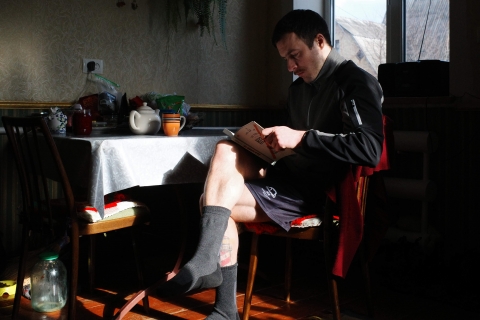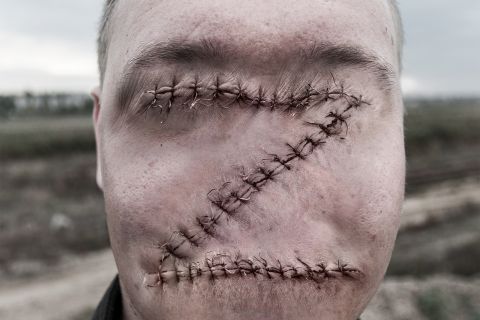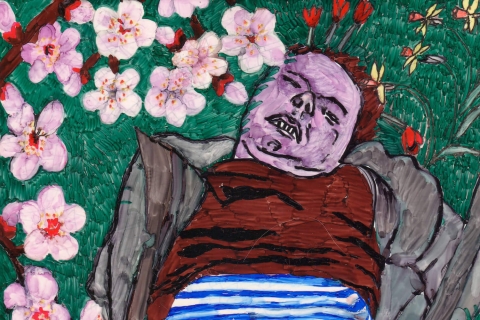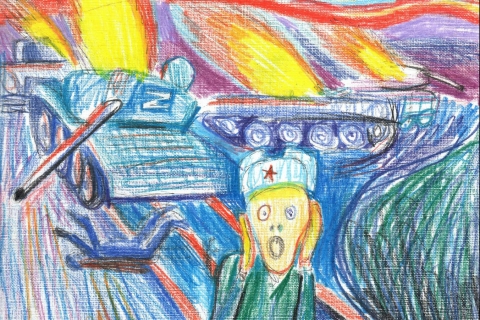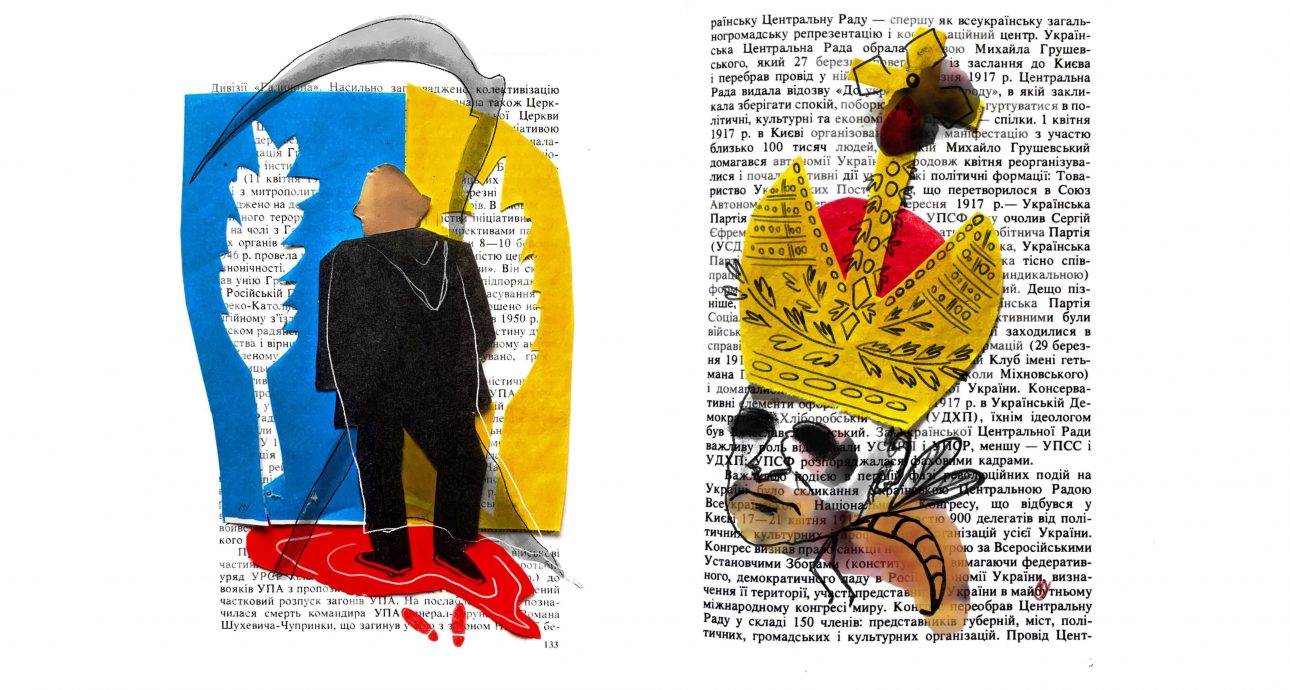
War Diary within a History Textbook: Appliqués by Maria Tikhonova

A Ukrainian freelance illustrator. Has a law degree, teaches at one of Kharkiv universities.
— I took up drawing about 4 years ago, at Aza Nizi Maza studio class of Mykola Kolomiets. My tools are gouache and pencils, sometimes watercolours. And at home I cut, stick and make collages and appliqués. I sometimes finalize all this digitally on a tablet. I don’t have a main direction, because I don’t consider myself an artist. It’s just that I like going to the studio and draw whatever comes to mind.
I don’t see myself as an artist. It’s just that I like going to the studio and draw whatever comes to mind.
In the studio, I liked learning about the art, artists, poets, writers, musicians, and about all kinds of things. It was interesting to observe the way kids and youth think during these classes, what they write on walls. But it is all in the past, the war has changed everything. I remember the evening of February 23 almost in minute detail: as usual, I was walking our Mittelschnauzer named Zhora. I remember everyone I spoke to and what exactly we were talking about – it was the possibility of invasion and the need to evacuate. But we didn’t want to truly believe it.
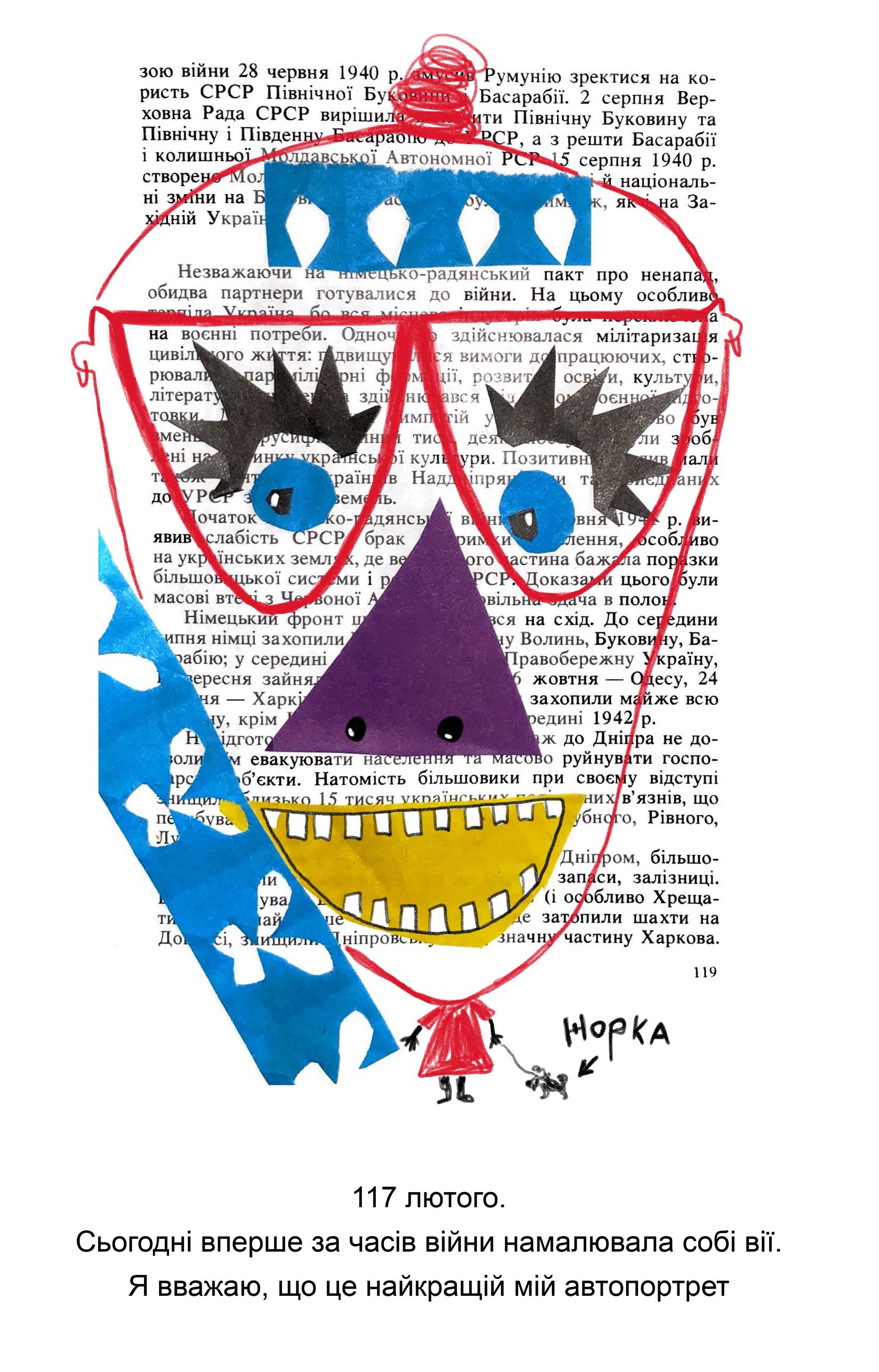
Today I put on the mascara for the first time since the war started. I think this is the best one of my self-portraits.
![Don’t pick the flowers! You are not the Moscals [a derogatory term for the russians — translator’s note]! Don’t pick the flowers! You are not the Moscals [a derogatory term for the russians — translator’s note]!](https://birdinflight.com/wp-content/uploads/2022/07/4-iyunya-2022-e1658507610805.jpg)
Don’t pick the flowers! You are not the Moscals [a derogatory term for the russians — translator’s note]!
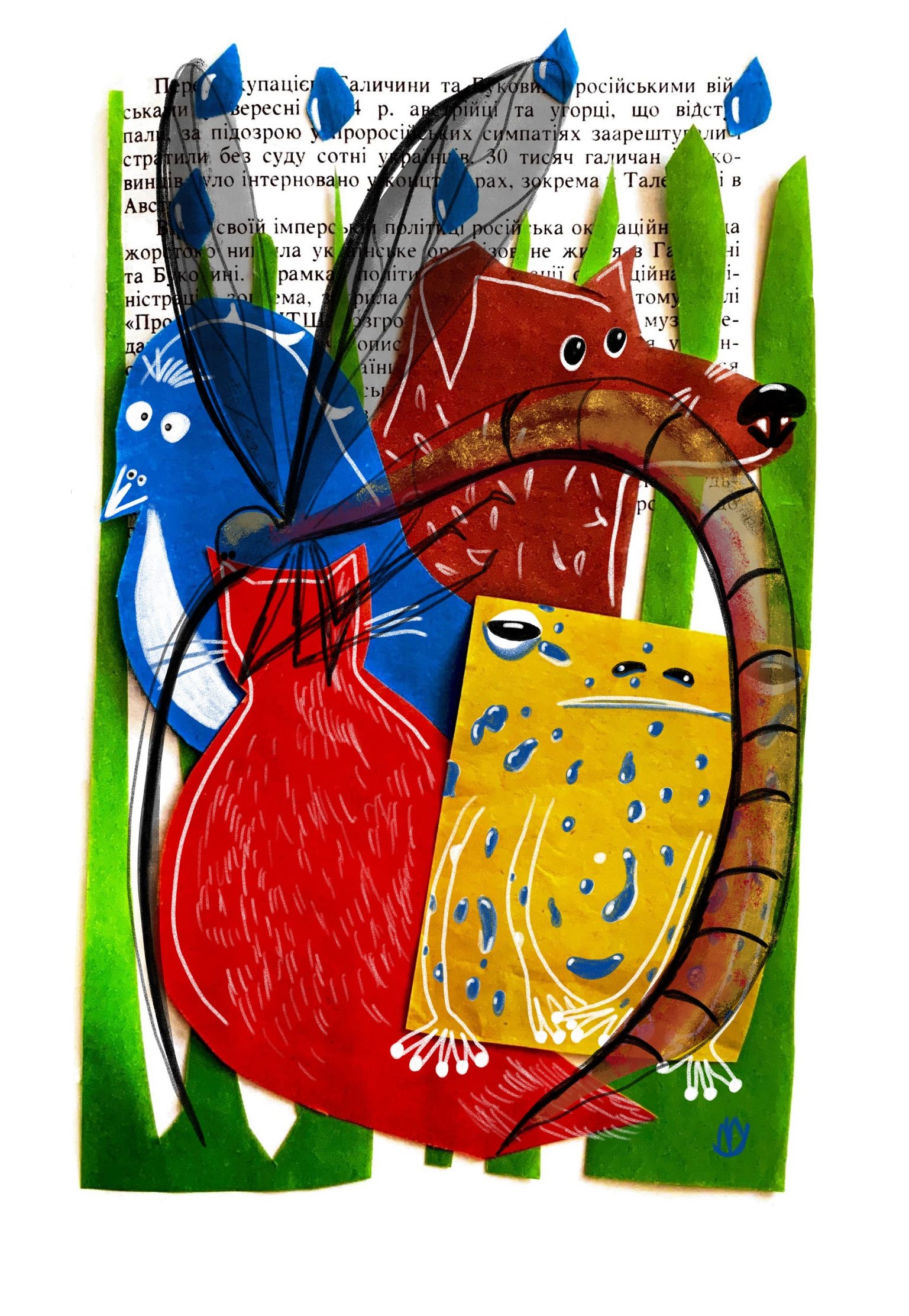
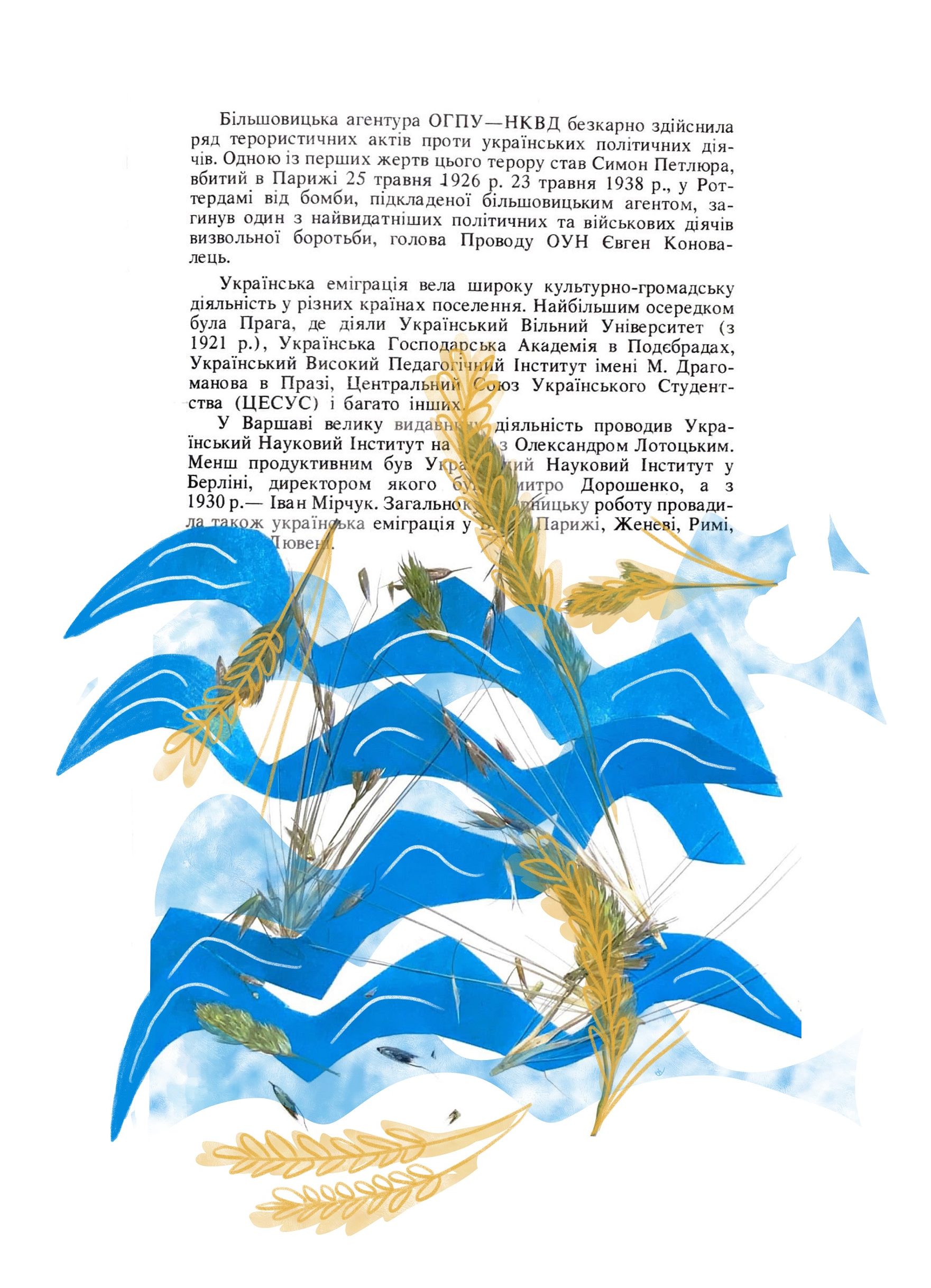
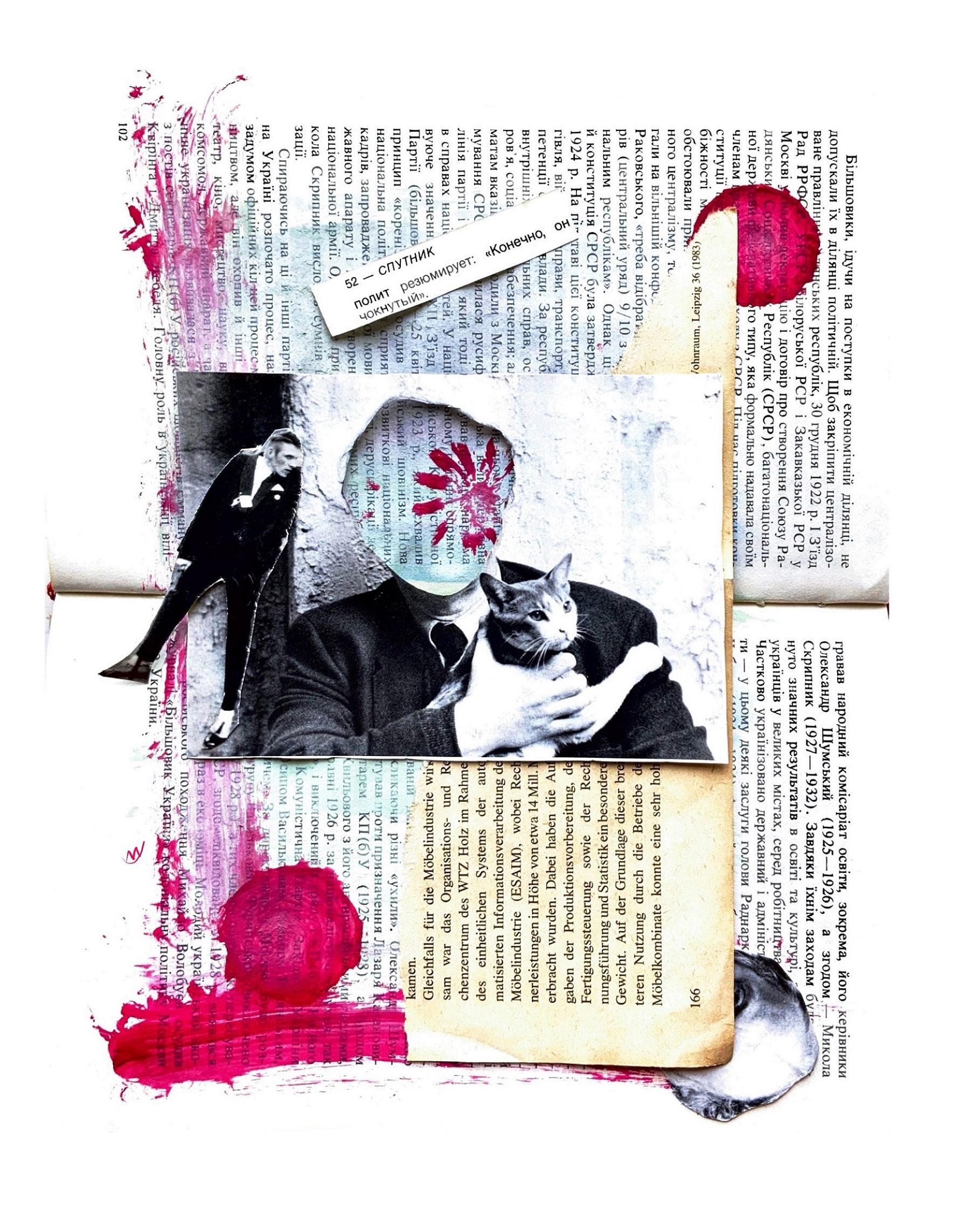
52 - Sputnik. polit sums up, ‘Of course, he’s mad’
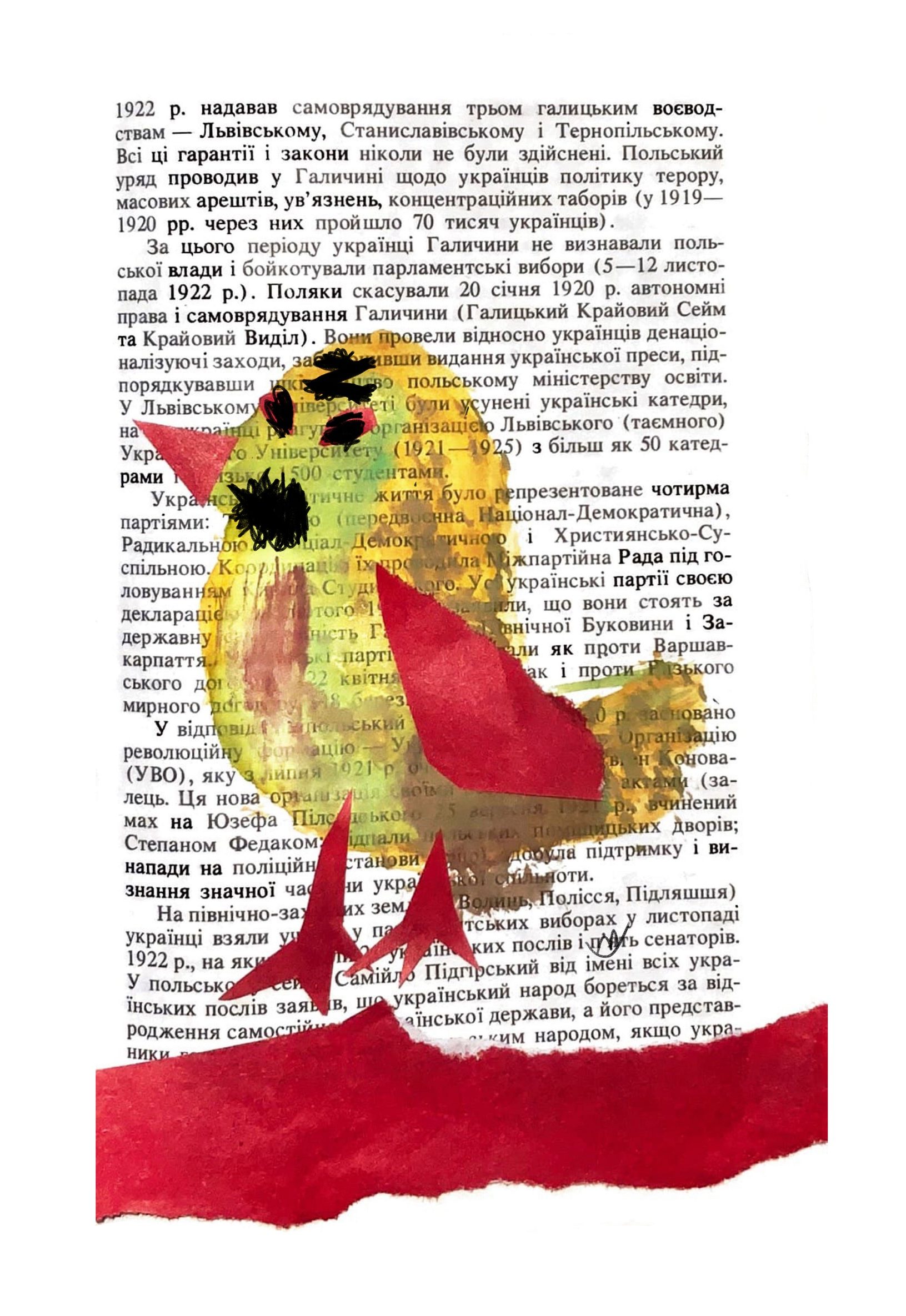
At 8 p.m. I received a call from my husband, who was already at the frontline, ‘They started moving. Spread the word. Take all you need and leave the city’. All things were packed back in January when my husband left. In fact, they were packed long before, in 2014, with a periodic change of clothing the kids have grown out of. We went to Merefa, a city in the outskirts of Kharkiv. My son and I witnessed the first missile right over our heads at around 8 a.m. as we were walking to the shop. The sound made one want to lie down on the ground and dig into it. That missile fell in the school area and miraculously did not explode – as you can see, they began bombing the “military” infrastructure right away.
My kids, parents, sister with her children and her husband moved to the west of Ukraine after midday. And I stayed in Merefa to guard the property, with Zhora, our old cat and my sister’s cat. Sleepless nights, winter darkness, explosions that made the dog bark loudly, frightened cats. Besides, I couldn’t turn on the light, and had to check constantly whether my husband was in touch.
My son and I witnessed the first missile right over our heads at around 8 a.m. as we were walking to the shop.
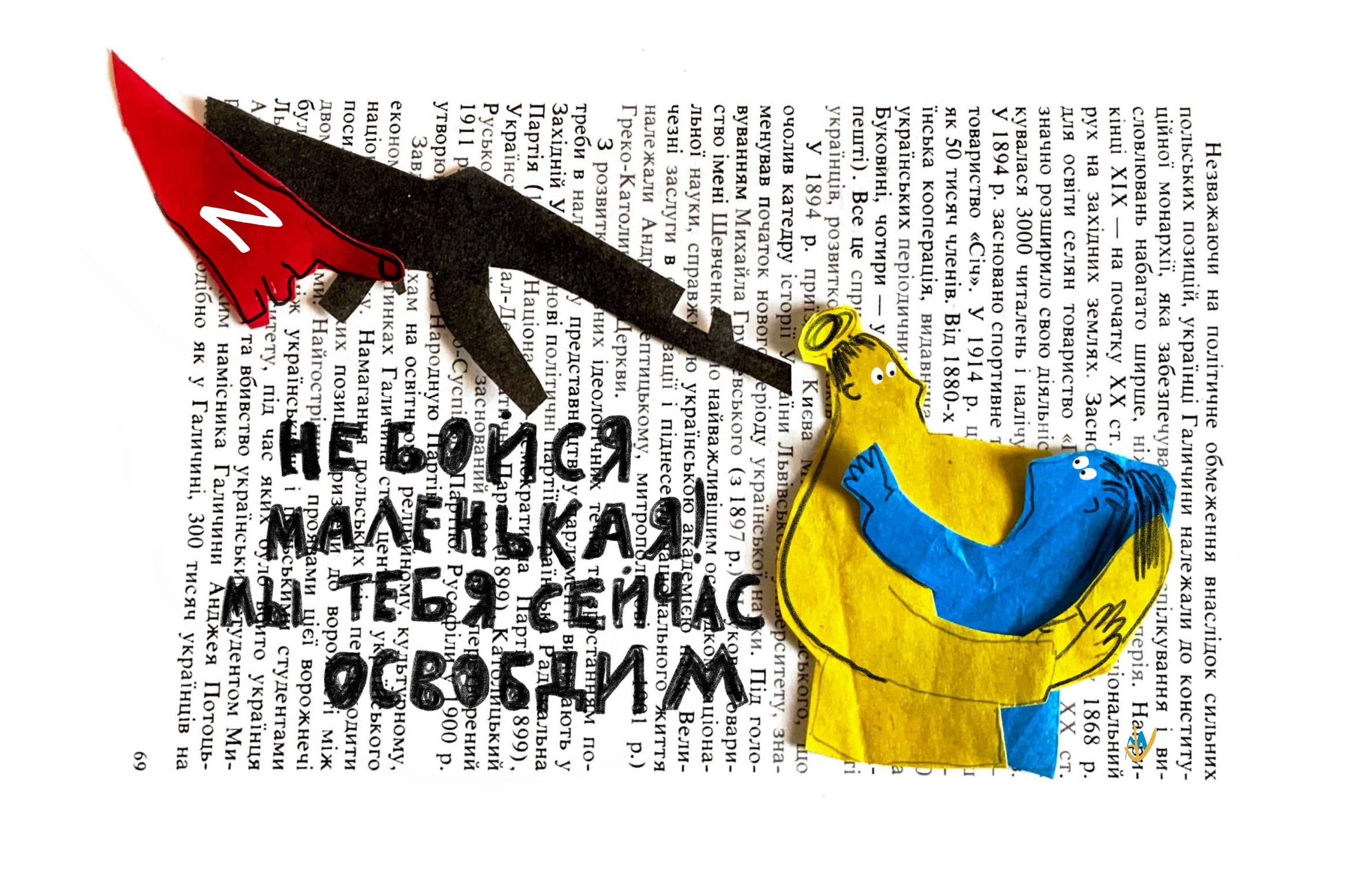
Little one, don’t be scared. We will set you free now.
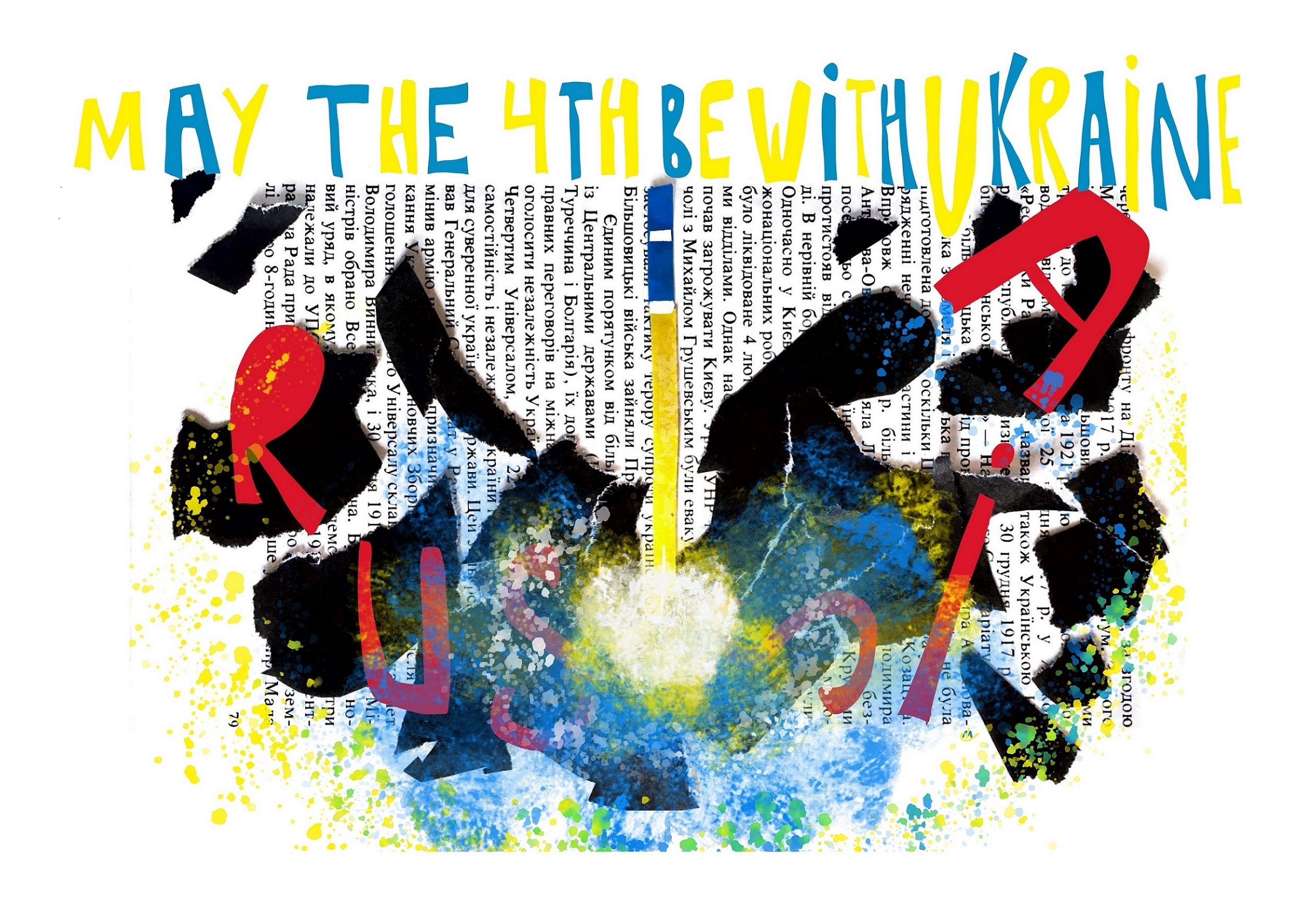
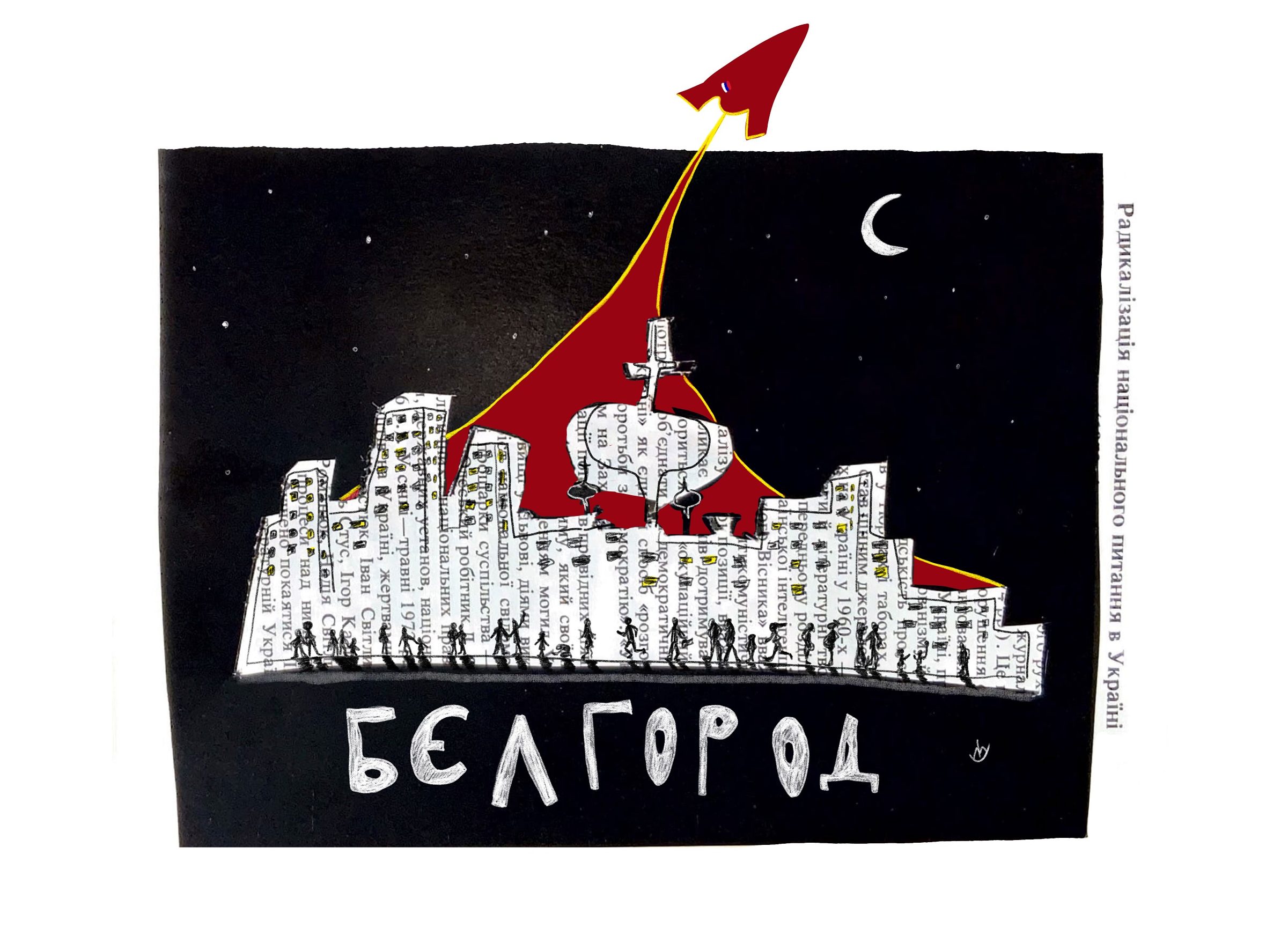
Belgorod
Radicalization of the national question in Ukraine
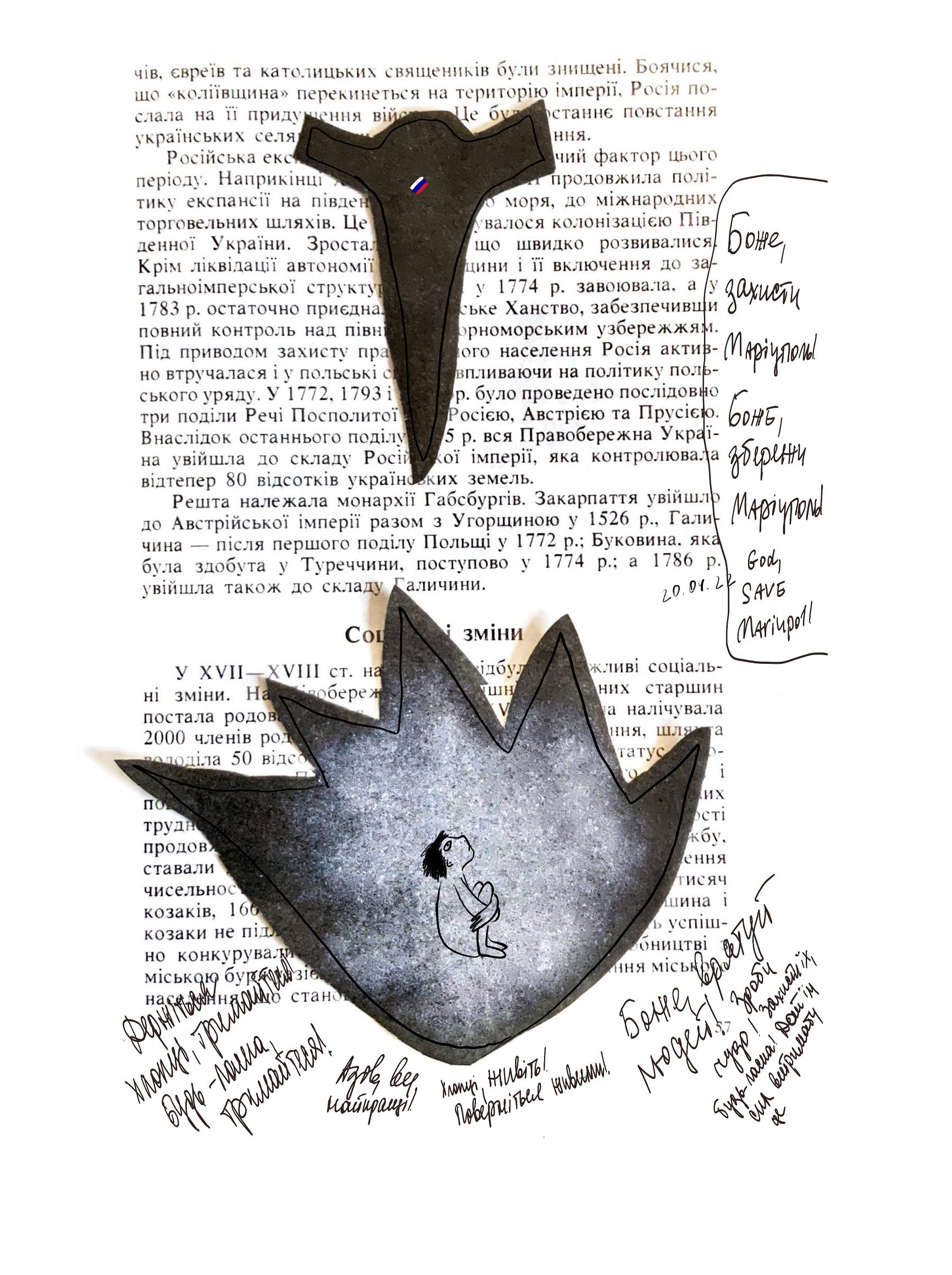
Hold on, guys! Please, hold on!
Azov, you are the best!
Guys, live! Come back alive!
God, save the people! Make a miracle! Protect them, please! Give them strength to withstand it all!
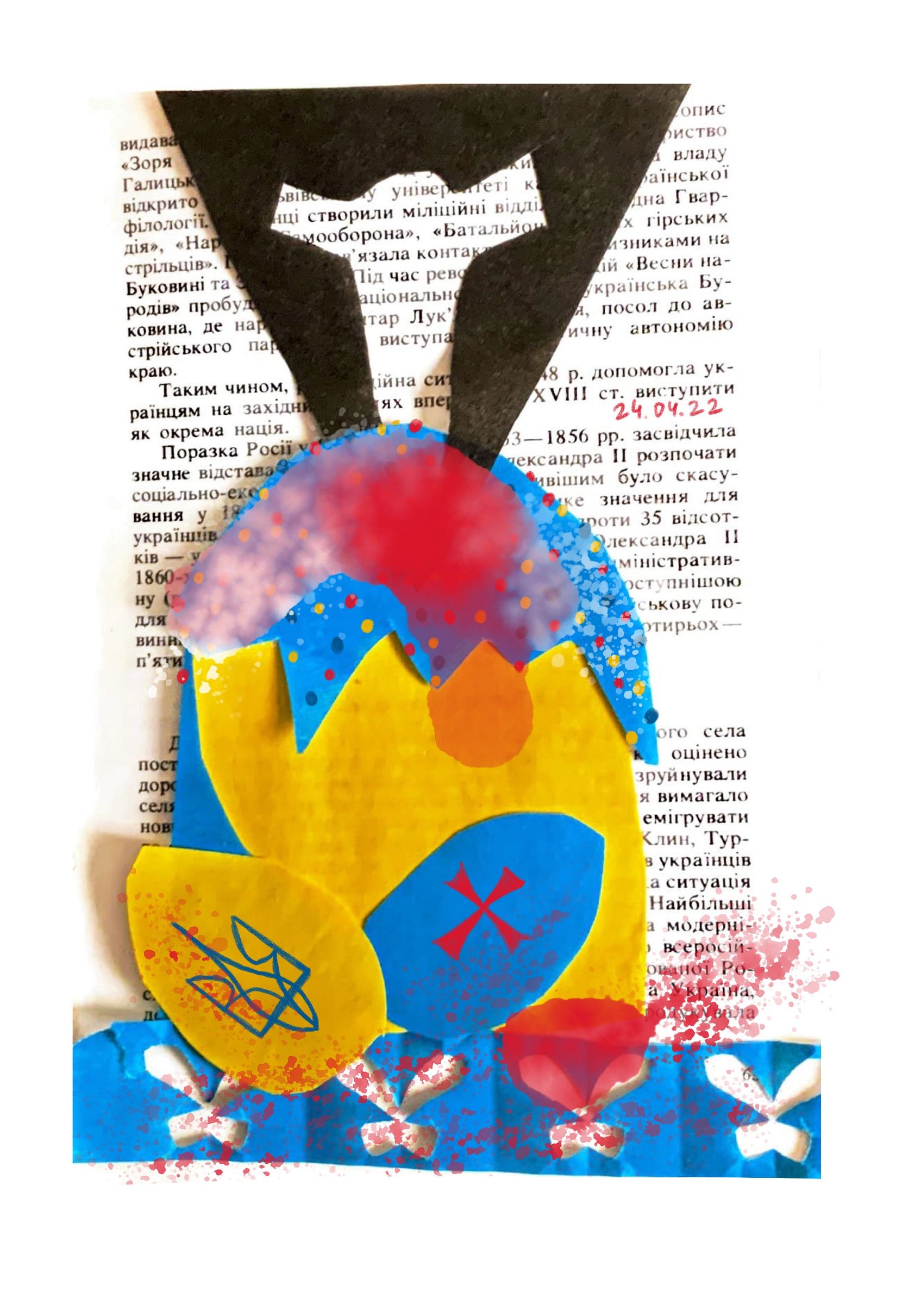
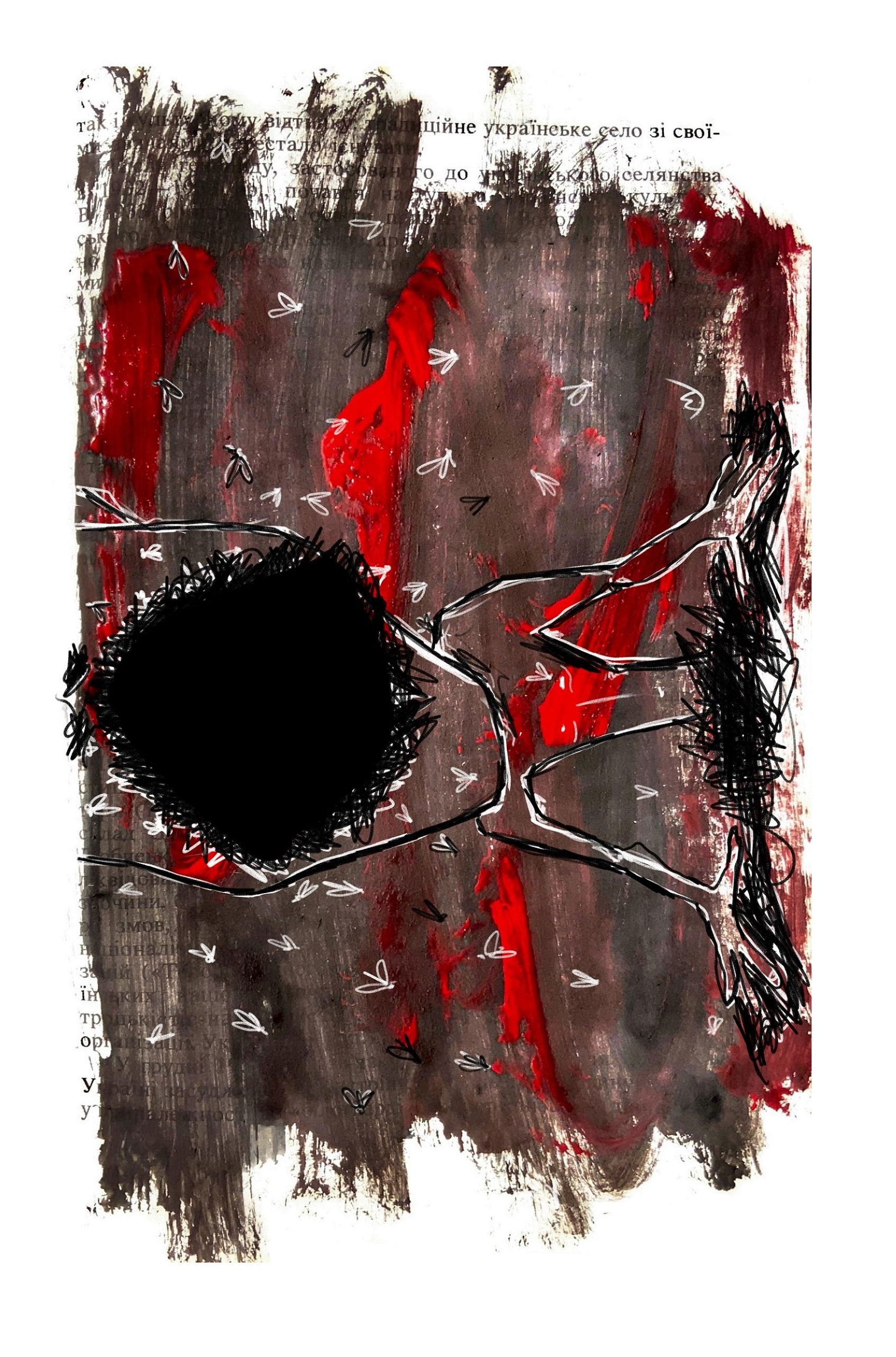
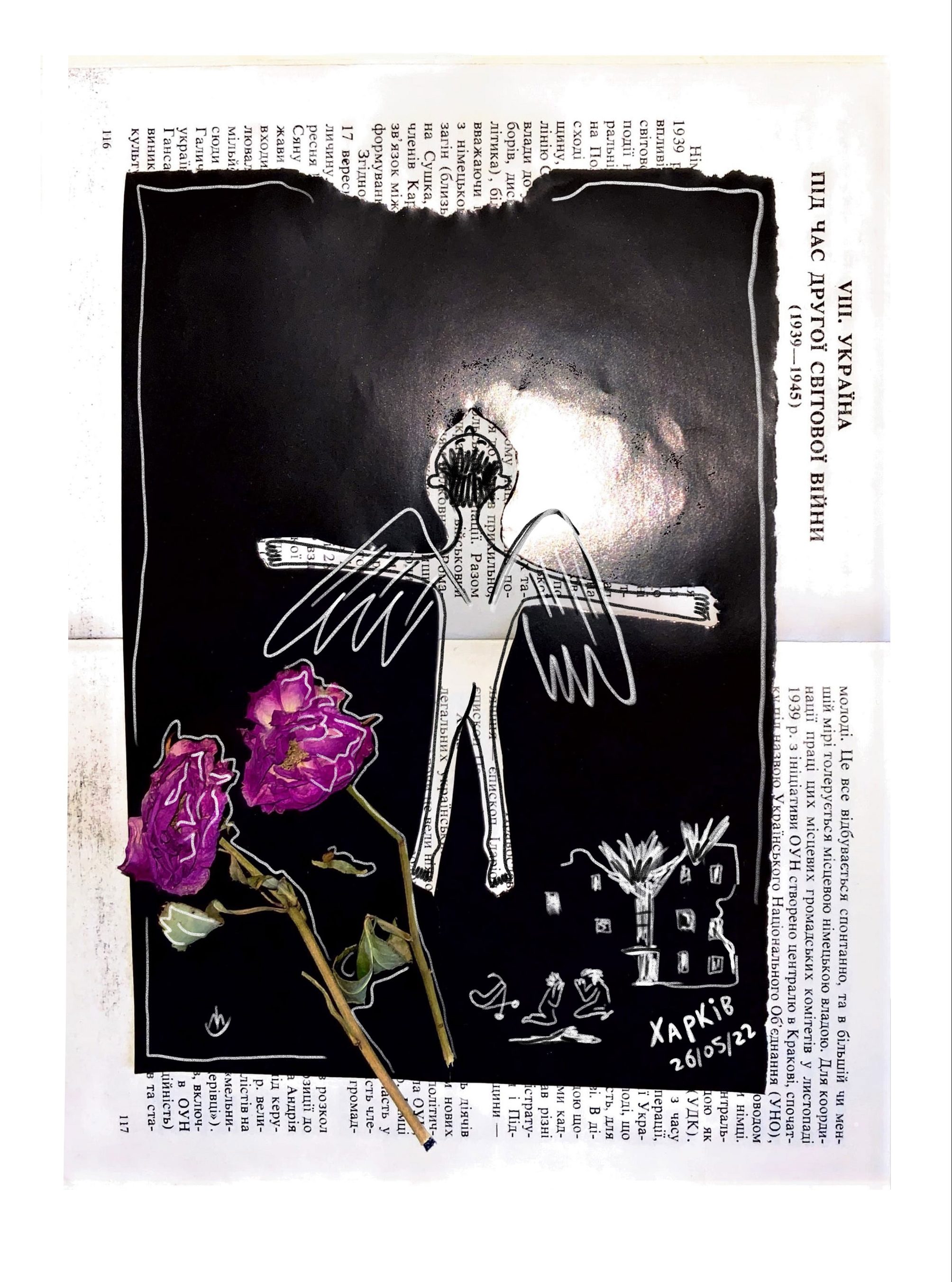
At the start of March, I also moved to the west of Ukraine. I spent a week in a car, there were roadblocks everywhere. I was looking for a place where I could stay for a long time with Zhora and our deaf 17-year-old cat Fenya. Finally, I managed to find an option in Drohobych, but life there was somewhat chaotic. Apparently, it has recently just become normal again, when we returned to Kharkiv. It is now that I begin to feel its flow.
I draw my first diary entry in Drohobych on March 10. It was a completely different format. I simply wrote on a black background what my husband and I have been messaging each other for these two weeks:
– How are you?
– Okay.
– And you?
– Okay.
I found a textbook by Arkady Zhukovsky and Orest Subtelny “Essay on the History of Ukraine” in the flat we stayed in. I randomly opened it on pages about the Holodomor and started reading. And then I thought that now we are also experiencing the history of Ukraine, and it might be written on top of these pages. This is how this series of appliques-collages-drawings on top of textbook pages was born. Earlier, I regularly kept a diary, now I carry on doing that, this time in digital format. Although I took a sketchbook with me, I felt unable to write or draw, even with a pen (gouache and pencils were left at home).
I found a textbook “Essay on the History of Ukraine” in the flat we stayed in. I randomly opened it on pages about the Holodomor and started reading.
It didn’t take much time to create one collage-illustration – it was more difficult to figure out what to cut and how to express my feelings. So I spent several days on some illustrations, as it was with one called “Mariupol died”. My second cousin was there with his family, now they are relatively okay: they got out of the city and were able to leave Russia. But his mother-in-law was killed by a bomb, she was buried in the yard, right in a funnel. Some illustrations were fast in the making, they took a few hours. For example, the one about Zhora’s haircut – I came up with the idea on the way from the grooming centre, quickly cut and drew it all at home.
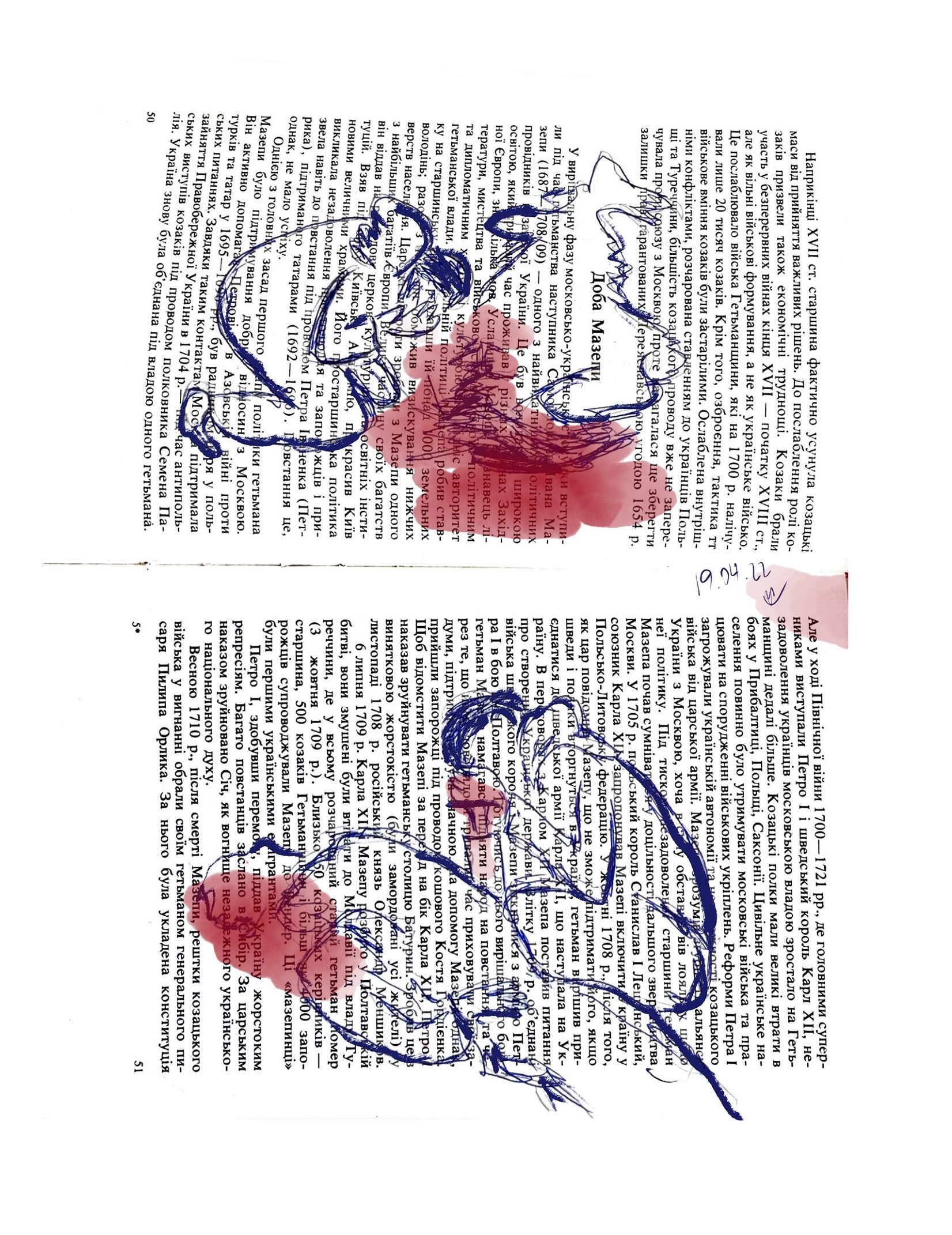
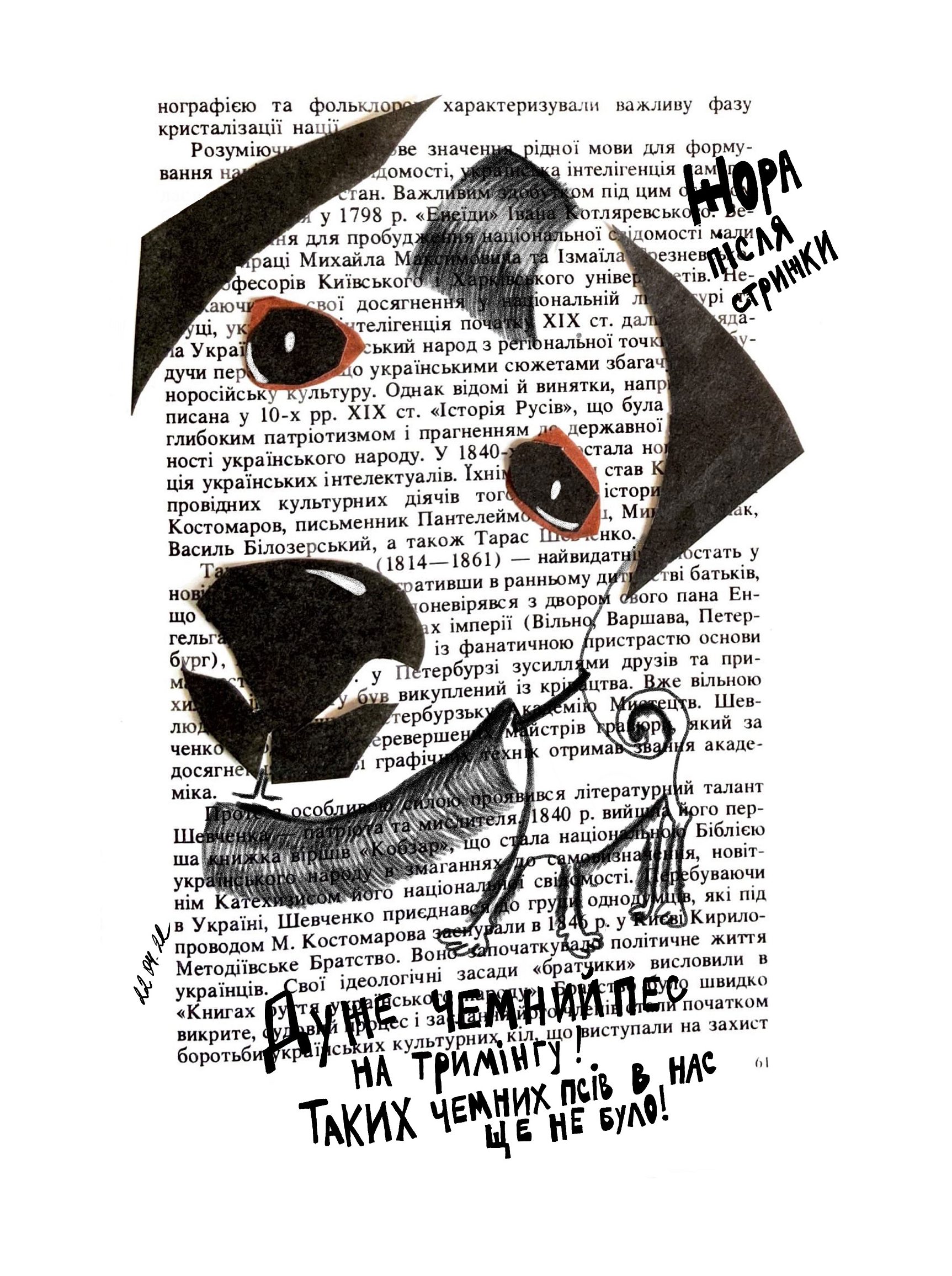
Zhora after the grooming
He behaves politely during the trimming! We’ve never had such well-behaved dogs before!
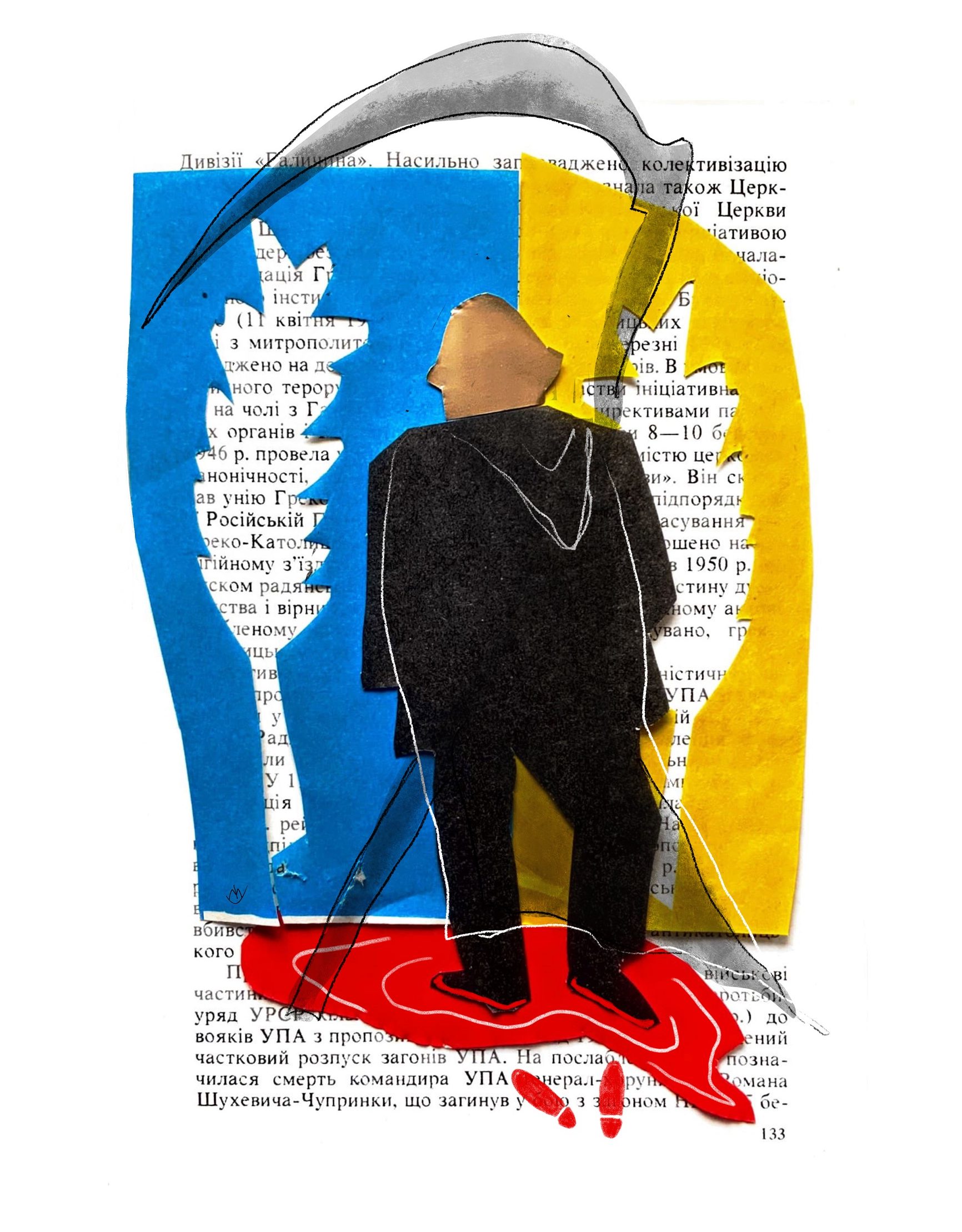
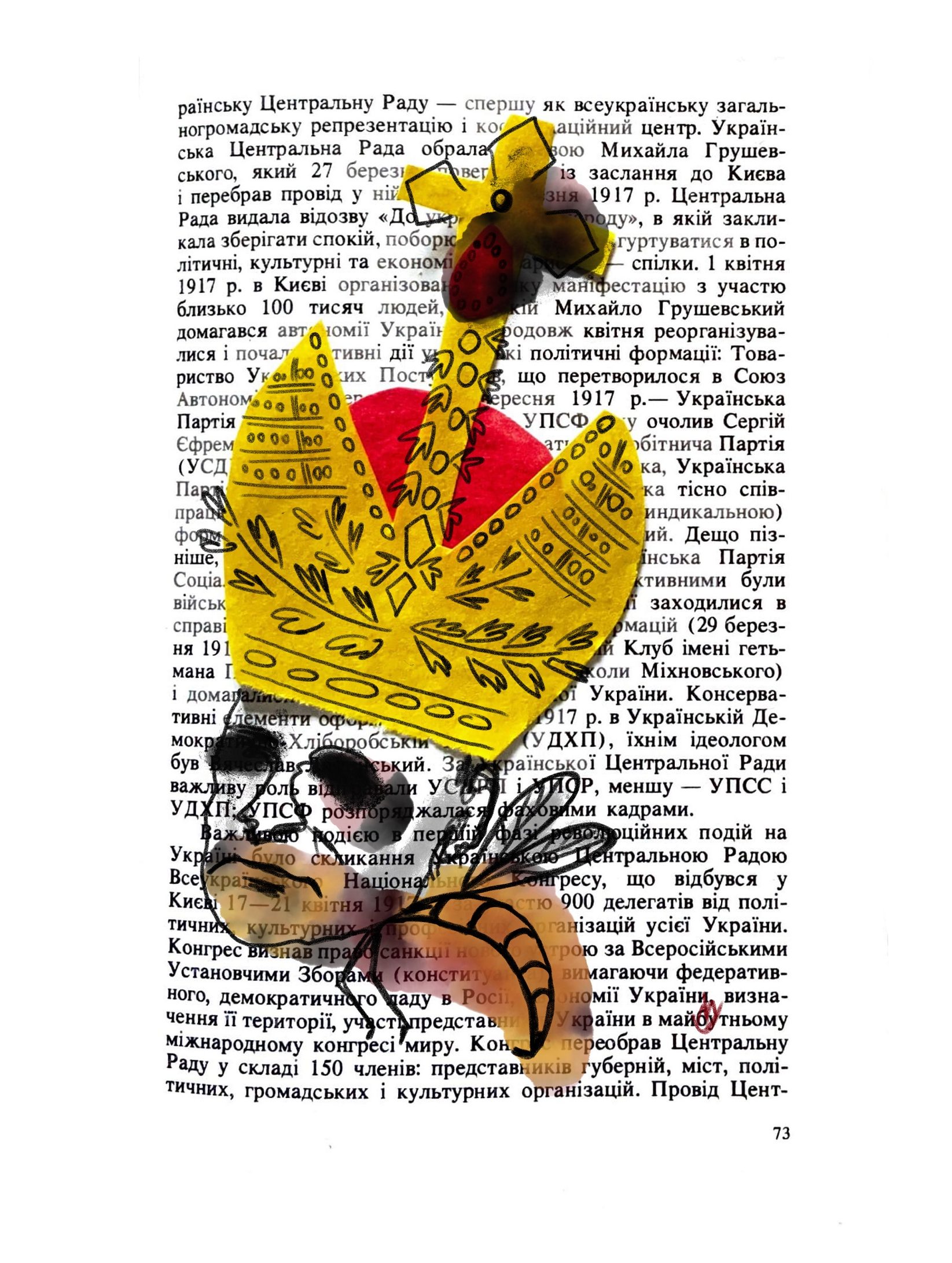
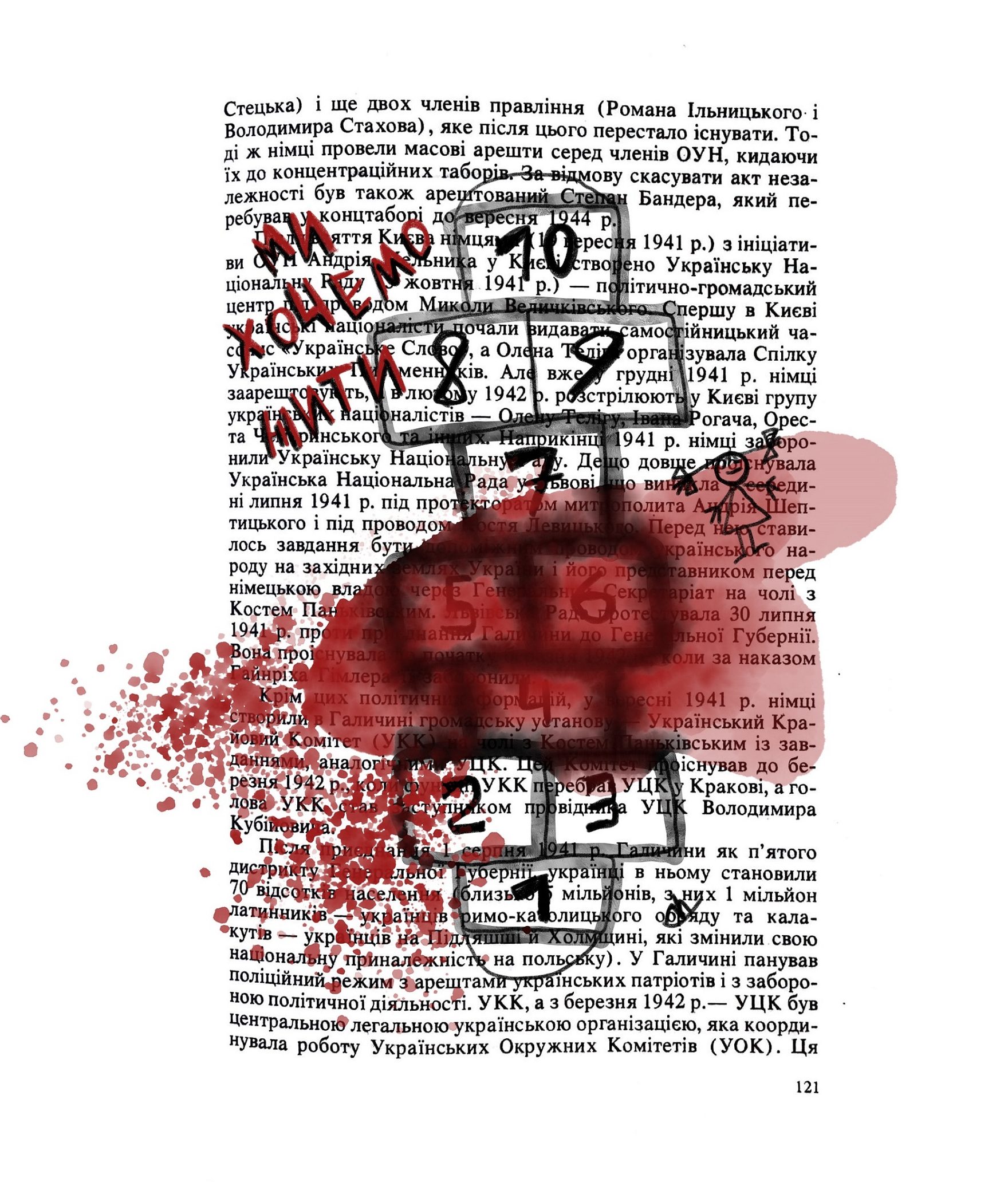
We want to live
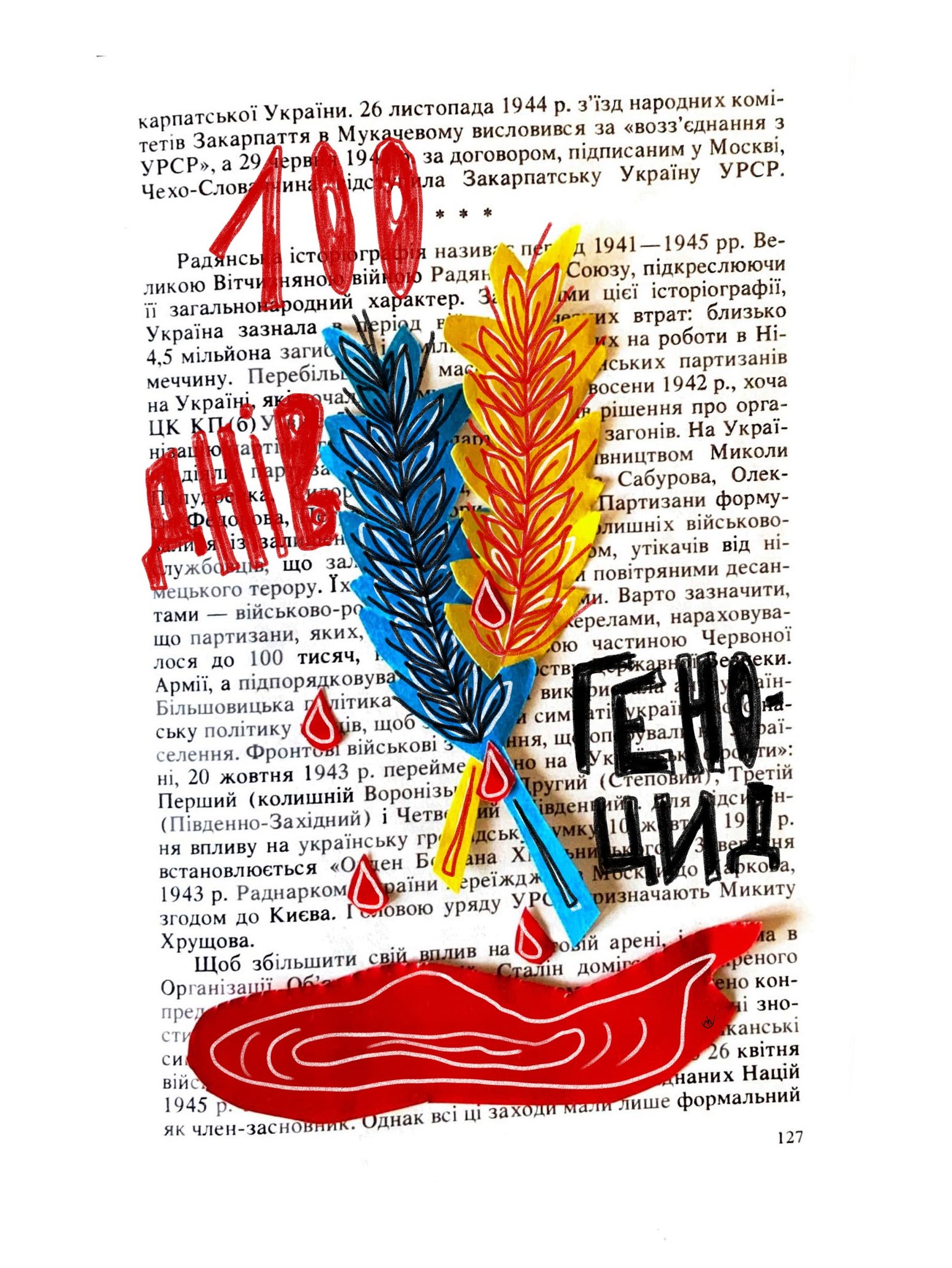
I have many relatives in Russia, but we don’t speak. My brother, who lives there, is an educated and intelligent person, a cool boy and a kindred spirit. By the age of 35, he even had a nickname Khokhol [A derogatory Russian term for Ukrainians – translator’s note], because he loved Ukraine and adored Kharkiv. When we were kids, we spent every summer in the village of Krynychki, Mykolaiv region, where his grandparents are buried. There is our air and our pond. He came to our place in Kharkiv, and we walked around the city, drank, talked, danced, listened to the boom box, had fun, lived. He told us about Nemtsov and Politkovskaya, about Bolotnaya Square, he shouted into the phone: “Do you know who he appointed instead of himself?! Medvedev, imagine! Medvedeva!” And around the year 2012 he bought himself a TV. At yet another meeting, he said: “You know, I come home, sit on the couch and start mindlessly switching channels”.
Brother told us about Nemtsov and Politkovskaya, about Bolotnaya Square. And around the year 2012 he bought himself a TV.
Since 2014, he stopped coming to Ukraine, these years we met only twice. We tried not to talk about politics. There were no calls. He did not get in touch until the night of February 24. “You are being bombed by the Armed Forces of Ukraine”, “You simply chose the wrong president”, “But it is staged, I will only trust the proven facts”, “I am against the war, I just wanted to live and work peacefully, and now it has all gone to pieces”. We cut contact with all the relatives. What could we tell them? Nothing. I gave up my hopes trying to explain them something or reach them right now. Maybe I should show them footage and videos from Bucha for 8-10 years? Or the ones from the bombarded Kharkiv or Mykolaiv? I do not know. Every day I keep saying, “Our russophobia is not enough.”
![Kremlin's handWoah! A button!February 129The news on puilo [a combination of words ‘putin’ and a popular slur — translator’s note] not leaving his DNA samples anywhere, not even in the toilet. A specially designated person is following him around with a suitcase and collecting it all. Don’t they ever switch the suitcases? Eh? For sure? I remembered their film ‘Shirli-myrli’. Do they really not mistake them? Kremlin's hand](https://birdinflight.com/wp-content/uploads/2022/07/10-iyunya-2022-e1658508706712.jpg)
Kremlin's hand
Woah! A button!
February 129
The news on puilo [a combination of words ‘putin’ and a popular slur — translator’s note] not leaving his DNA samples anywhere, not even in the toilet. A specially designated person is following him around with a suitcase and collecting it all. Don’t they ever switch the suitcases? Eh? For sure? I remembered their film ‘Shirli-myrli’. Do they really not mistake them?
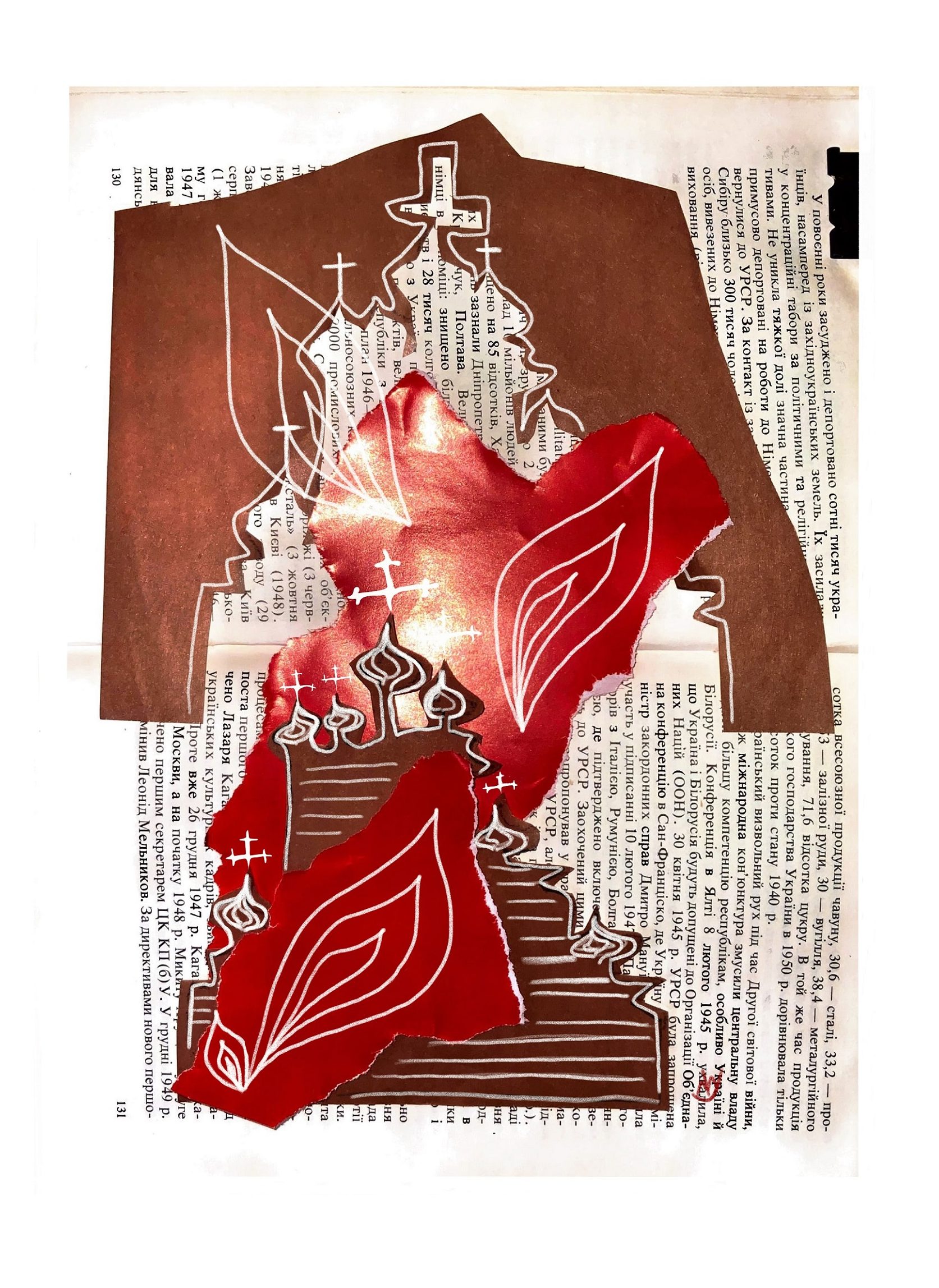
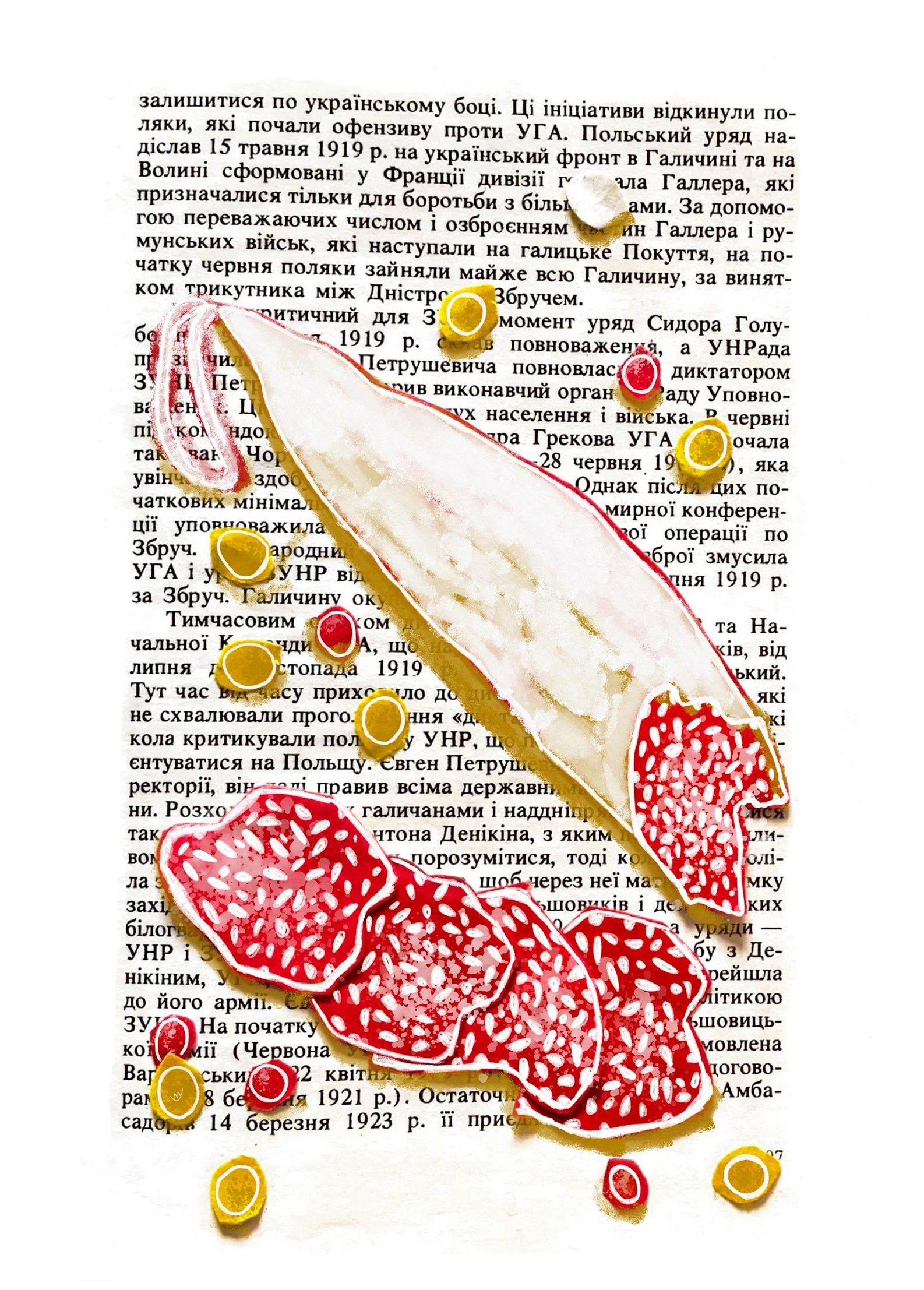
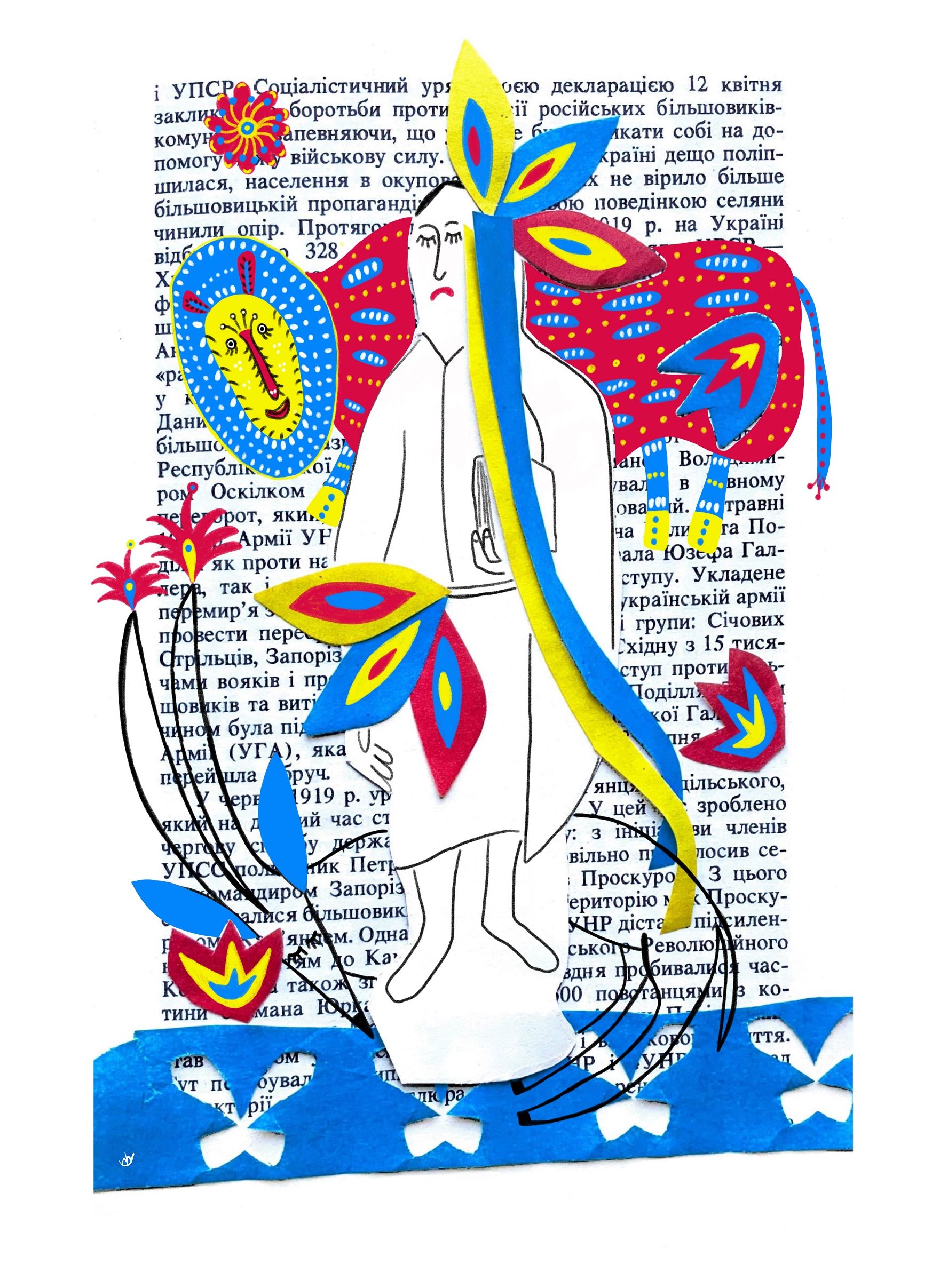
I value most the artworks “Mariupol is dead” and “The war will not end” – this was the phrase my husband said to me during one of our phone conversations. I understood that this is how it is, but it was hard to hear these words from a close one who is there, almost in the middle of a typhoon.
I also recall the pain I felt when my son told the story of his friend from Izyum. The 19-year-old girl went to Lviv at the end of February, and left first. While her parents and a younger brother had to leave in a few days because they were packing. At the beginning of March, they went out of touch. The city had already been occupied, so she waited. In May, a neighbour from Izyum called her and said that they had all died back then, in March, from a bomb hitting their house directly.
And on May 5, my husband and I marked our 22nd wedding anniversary. Usually, one of us forgot about the anniversary – kudos to the one who remembered it. But 21 years ago, on May 5, we were together. This year was different – we did not forget, but we were not together. The delivery guy brought me flowers. It was on February 94.
![Izyum [a city in Kharkiv oblast — translator’s note] Izyum [a city in Kharkiv oblast — translator’s note]](https://birdinflight.com/wp-content/uploads/2022/07/7-maya-2022-e1658508933720.jpg)
Izyum [a city in Kharkiv oblast — translator’s note]
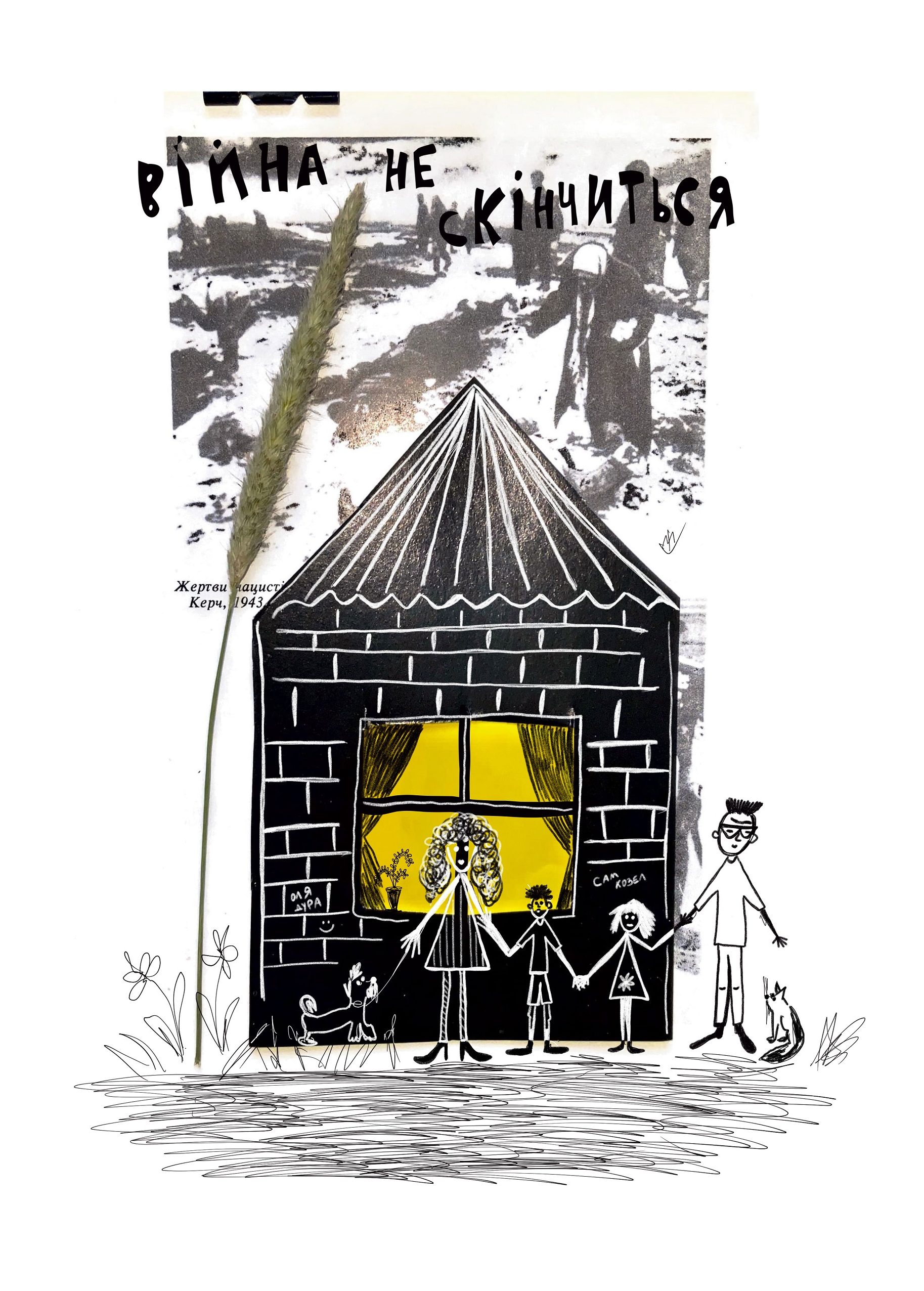
The war will never end
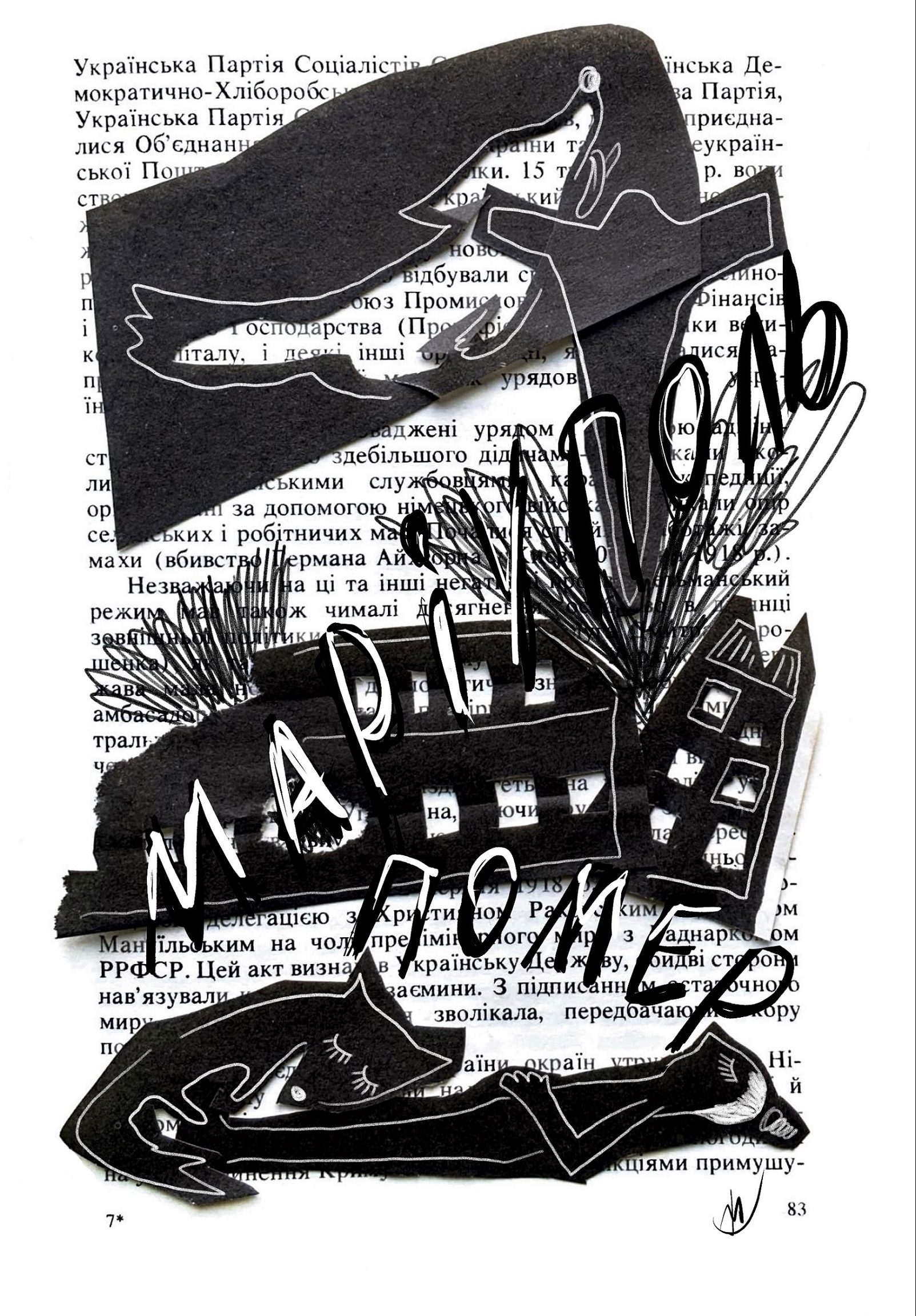
Mariupol is dead
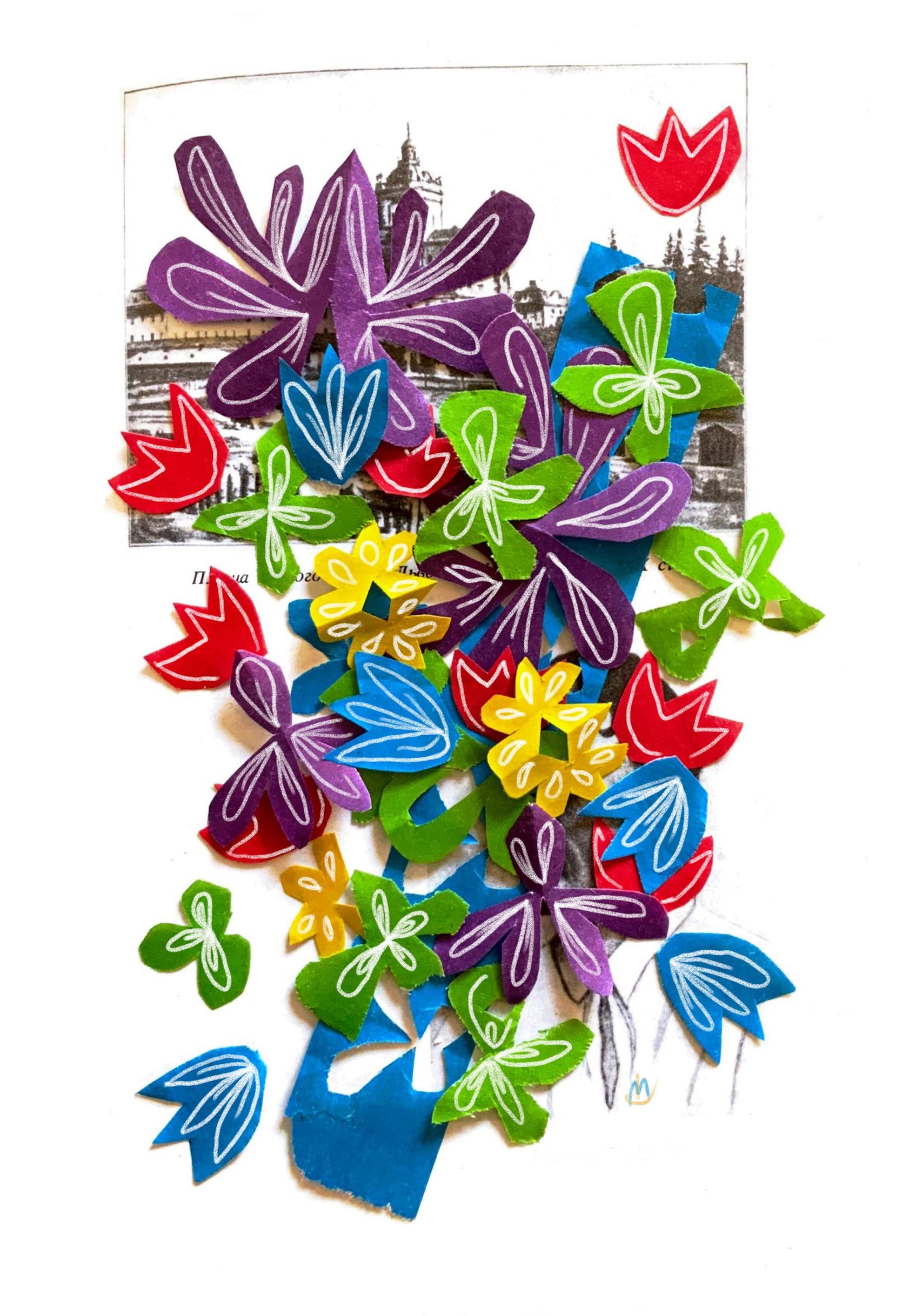
New and best
